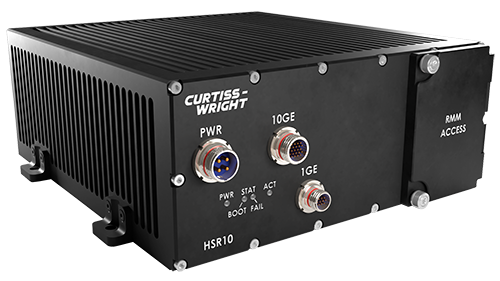
Data at Rest in Deployed Applications
This blog provides a brief overview of solid-state memory types from the perspective of data at rest (DAR) in deployed military applications. Deployed data at rest devices can take the form of direct attached storage (DAS) or network attached storage (NAS). For a comparison of direct attached storage and network attached storage, see the white paper: Choosing the Right Data Storage Solutions for Modern Military Missions.

An example network attached storage device is shown in Figure 1. The example network attached storage supports 10 gigabit Ethernet (10GbE) networks and has multiple terabytes of high-speed, removable memory.
This blog will focus on technical differences between solid-state memory types. It will not address cost directly, which will vary depending on the manufacturer, capacity, and form factor. Register/log in to learn more.